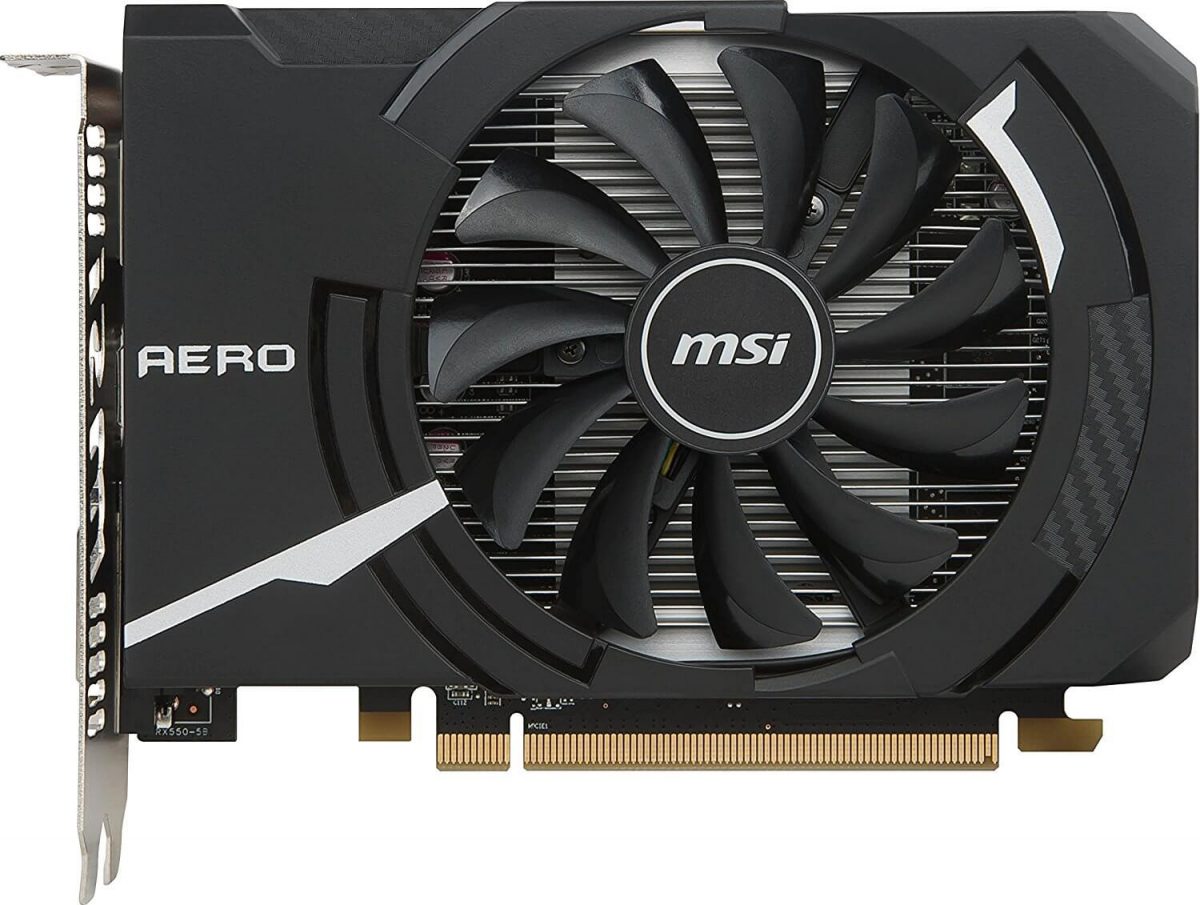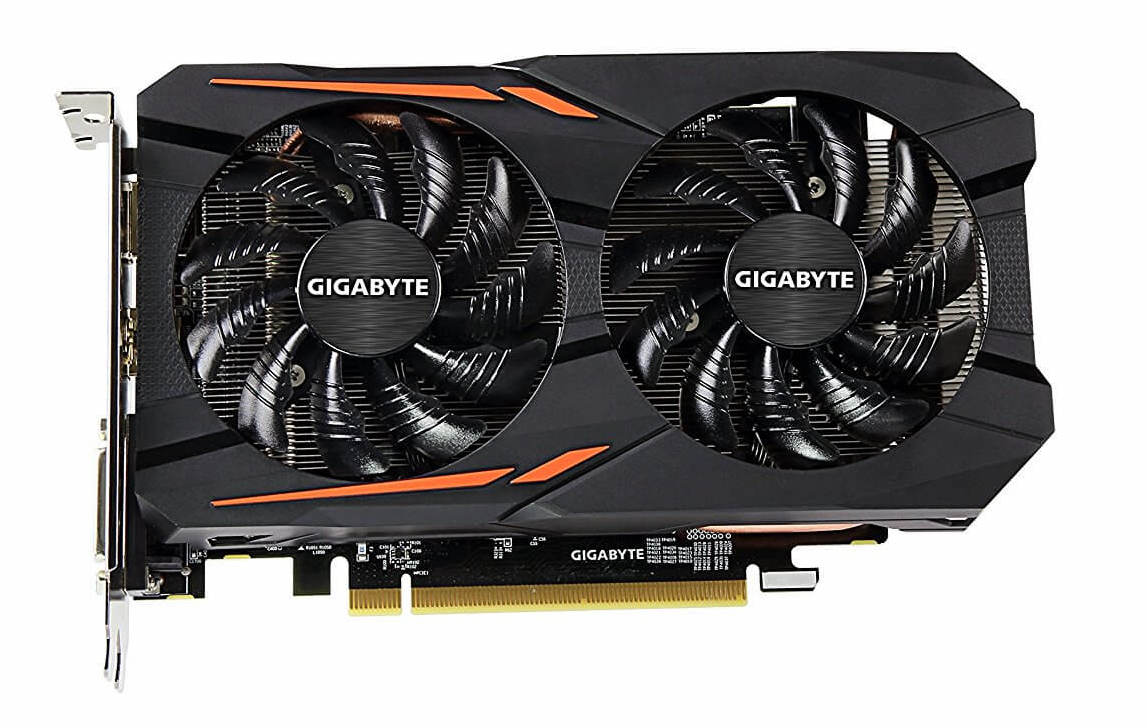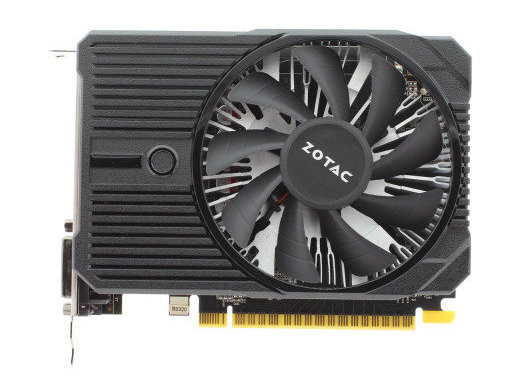Best Graphics Cards under $200 in 2018 – Buyers Guide
The title of best budget GPU for gaming is a hotly contested battle between AMD and NVIdia, whilst the former is known to lean more towards more bang for your buck, the latter in recent years has made some great budget cards. In reality when looking at a budget GPU you should be looking at how often it can achieve 1080p 60fps in the newest games, at a push at least 1080p 30fps. If a GPU can’t even hit that consistently even on the lowest of graphics settings, it should be discarded. The GPUs in this list give enough power for 1080p gaming to be a feasible prospect seeing as it is the most common resolution according to the Steam Hardware Survey.
There are a lot of aspects to take into account when choosing between the red and green sides. The main thing is in regards to their variable refresh rate technologies, Freesync and G-SYNC. If you already own a Freesync monitor, you’ll get the most out of it with an AMD card and vice versa. Variable refresh monitors are a great investment for budget cards because it does a good job of masking screen tearing which is what can make a game feel so choppy. On a budget, Freesync is a better choice as the monitors are a lot cheaper in general, sometimes by hundreds of dollars for essentially the same monitor.
AMD
1. MSI AERO Radeon RX 550 – $100
The MSI AERO Radeon RX 550 is a tiny card that only has a 50w TDP, making it deal for those with small PCs that you want running quiet and cool. What is unique about this MSI version of the card is that it comes equipped with 4GB of VRAM instead of the regular two, future proofing it that little bit more. It has a core clock of 1203 Mhz and comes equipped with a DVI-D port, HDMI Port and DisplayPort.
Now this cards DX11 performance isn’t anything to write home about, in many games though it will easily achieve 1080p 30-60fps on low to medium settings. Where the card really shines games that make use of the DX12 and Vulkan APIs. Going forward expect the majority of games to be using DX12 (to a lesser extent Vulkan) meaning the RX 550 may have longer legs than its NVidia counterpart.
2. GIGABYTE Radeon RX 560 Gaming OC – $120
The Gigabyte Radeon RX560 Gaming is of a similar size to its younger brother, the RX 550, just slightly longer to incorporate two fans rather than just one. The 560 comes with 4GB of VRAM and a base clock of 1287 MHz. It comes with connections for DVI-D, HDMI 2.0b and DisplayPort 1.4.
Performance wise, the 560 does an admirable job at 1080p, achieving between 40-60fps in many of the latest games on low to medium settings. Similarly for games in DX12 performance is much higher meaning in the long run the 560 may mature somewhat like a fine wine. For just $20 more you do get quite a big boost, if you can afford the extra money over the 550 the 560 is a no brainer.
3. XFX RADEON RX 470 – $190
The issue with the RX 4XX series of cards is being able to find them in stock, as the RX 5XX series moved in the higher end of the 4XX cards stopped being manufactured. This means that if you can find the 470 or 480 for under $200 they are a bit of a bargain. The 470 comes with 4GB of VRAM and a base clock of 1226MHz. This XFX version comes with three DisplayPorts and one HDMI. Interestingly this XFX model comes with their swappable fan design, so you can buy LED fans that fit your colour scheme. A nice feature for those that care about the aesthetics of their PC.
The RX 470 is something of a mini powerhouse. For the price you can easily hit 1080p 60fps on at least medium settings on many of the newest games. This is the AMD GPU to get for solid 1080p gaming on a budget, if you can find one that is.
NVidia
1. ZOTAC GeForce GTX 1050 – $110
The 1050 is aimed more towards an esports crowd, it can easily run something like DOTA maxed out at 1080p with little power draw, heat, and noise. It doesn’t even need any additional power, it just takes everything it needs from the PCIe slot. It comes with 2GB of VRAM and a base clock of 1354 Mhz. Included is DVI-D, HDMI 2.0b and DisplayPort 1.4, making it fully 4K compliant. Size wise this card is perfect for Mini-Itx builds, especially with the low power requirements.
The 1050 is better overall than the RX 550 at ten dollars more but it starts to get more interesting when you take into account the RX 560 instead, the 1050 and the RX 560 battle it out and exchange blows in many games, though in DX11 games the 1050 is more often than not in the lead. DX12 sees the 560 pull ahead. The 1050 is a really solid card at $110, netting between 45-60fps in many of the latest games on medium settings.
2. Gigabyte Geforce GTX 1050 G1 Gaming – $135
The 1050Ti has a twenty five dollar premium over its cousin and it earns that extra money most definitely. It comes with double the VRAM and a base clock of 1392Mhz. There is one DVI-D, HDMI and DisplayPort a piece. This Gigabyte variant can easily fit into any Mini-ITX case with no problems, for an extra fifteen dollars there is even an extra low profile version of the card.
The extra money you put in for the Ti model usually translates to an extra 5-6 frames per second and that is before you overclock. For the extra twenty five dollars you really get a nice improvement that, providing your budget can stretch that far, is a worthwhile upgrade over the base 1050 model and even the RX 560.
3. EVGA GeForce GTX 1060 3GB SC GAMING – $168
The GTX 1060 is the king of the mid range undoubtedly. The RX 480/580 put up a good fight but lack of availability makes it difficult to recommend over the GTX 1060. Whilst this particular 1060 is the 3GB VRAM model, for the money, you can not get a better card. It has a 1607MHz base clock. This EVGA model can easily fit in a Mini-ITX build. Power consumption is lower than the AMD equivalents. It comes with three DisplayPorts and one HDMI port.
The performance difference between the 3GB and 6GB versions of the 1060 are not as big as you may think. It entirely depends on what resolution you play at and what graphics settings you have enabled. The 1060 can easily maintain an 60fps at 1080p on high settings, coupled with a cheap G-SYNC monitor, I believe it would be a perfect budget solution.
It is a bit of a shame that AMD hasn’t been able to keep supply of their really good RX 4XX and 5XX series, this may be in part due to the imminent release of their new VEGA cards. It is worth waiting to see what AMD have to bring to the table at Computex at the end of May before splashing the cash right now. If you can’t wait and only want an NVidia card, the 1060 is a fantastic choice that is sure to give you many years of great service at 1080p.















